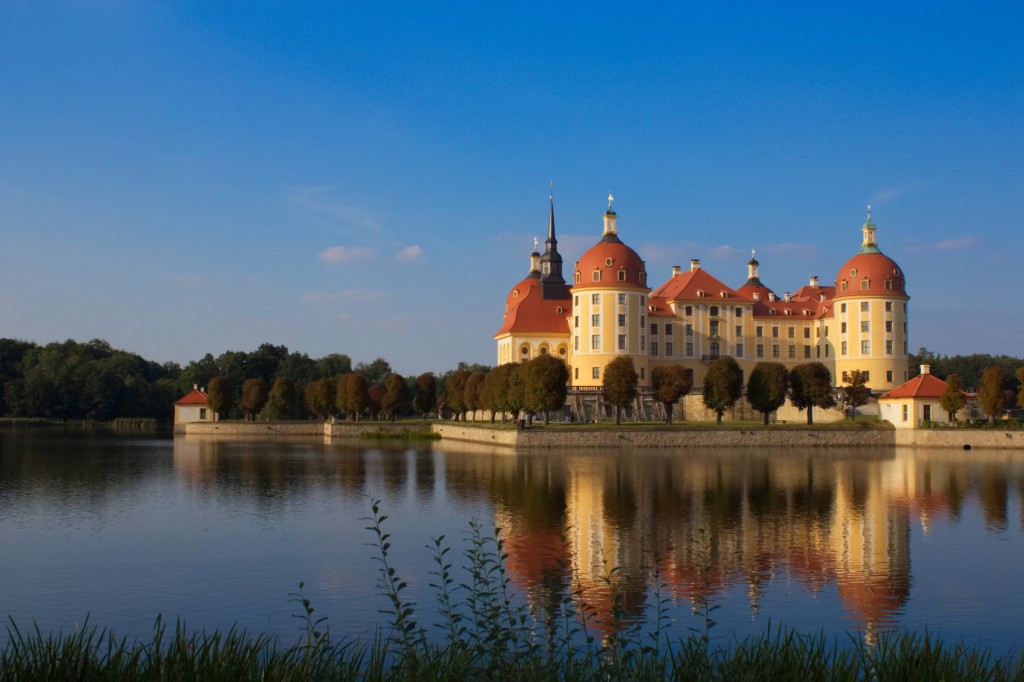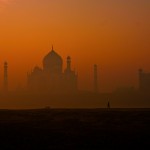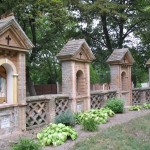German jury nominates grande pictures
The Germany jury has published the top-100 winning pictures of the German competition a little while ago. While the broader selection gives a very thorough image of the German cultural heritage, it is clear that in the jury has clearly chosen to send the big pictures that represent Germany’s rich history – mostly castles and churches.
The pictures are very clear cut and encyclopedic – the mystery that can be found in some other countries (and also sometimes in the broader selection of the top-100) or the deteriorated buildings (with the exception of the monastery ruins at the 8th place) did not come as far. Also interesting is the clear outlier in the selection that perhaps wouldn’t be expected: the third place is an example of ‘modern heritage’. The apartment building by architect Walter Gropius in the west of Berlin was part of the Interbau project at the International Building Exhibition of 1957. It stands alone in the middle of giants from centuries ago.
![By Christian Skubich[CC-BY-SA-3.0 (www.creativecommons.org/licenses/by-sa/3.0)], via Wikimedia Commons 1st place: Castle Moritzburg near Dresden at evening light](http://upload.wikimedia.org/wikipedia/commons/thumb/7/79/Schloss_Moritzburg_von_S%C3%BCd-West.jpg/640px-Schloss_Moritzburg_von_S%C3%BCd-West.jpg)
1st place: Castle Moritzburg near Dresden at evening light, by Christian Skubich
![By BonMichel[CC-BY-SA-3.0 (www.creativecommons.org/licenses/by-sa/3.0)], via Wikimedia Commons 2nd place: Entrance of the observation tower Posseltslust, settlement Kohlhof, Heidelberg](http://upload.wikimedia.org/wikipedia/commons/thumb/c/cb/Posseltslust_Eingangsbereich.jpg/640px-Posseltslust_Eingangsbereich.jpg)
2nd place: Entrance of the observation tower Posseltslust, settlement Kohlhof, Heidelberg, by BonMichel
![By Janericloebe[CC-BY-SA-3.0 (www.creativecommons.org/licenses/by-sa/3.0)], via Wikimedia Commons 3rd place: Apartment building by Walter Gropius in the Berlin Hansa District](http://upload.wikimedia.org/wikipedia/commons/thumb/f/f8/Berlin_H%C3%A4ndelallee_3-9_001.JPG/640px-Berlin_H%C3%A4ndelallee_3-9_001.JPG)
3rd place: Apartment building by Walter Gropius in the Berlin Hansa District, by Janericloebe
![By Johan Bakker[CC-BY-SA-3.0 (www.creativecommons.org/licenses/by-sa/3.0)], via Wikimedia Commons Souther part of the Ulm Minster](http://upload.wikimedia.org/wikipedia/commons/thumb/b/ba/Ulmer_Munster_Innenansicht.jpg/556px-Ulmer_Munster_Innenansicht.jpg)
Southern part of the Ulm Minster, by Johan Bakker
![By Clemensfranz[CC-BY-SA-3.0 (www.creativecommons.org/licenses/by-sa/3.0)], via Wikimedia Commons State Theater Cottbus in Brandenburg from the East](http://upload.wikimedia.org/wikipedia/commons/thumb/5/5e/Cottbus_Theater_von_Osten.jpg/640px-Cottbus_Theater_von_Osten.jpg)
State Theater Cottbus in Brandenburg from the East, by Clemensfranz
![By Jörg Wendland[CC-BY-SA-3.0 (www.creativecommons.org/licenses/by-sa/3.0)], via Wikimedia Commons Hohenzollern Castle near Hechingen](http://upload.wikimedia.org/wikipedia/commons/thumb/5/50/Burg_Hohenzollern.jpg/640px-Burg_Hohenzollern.jpg)
Hohenzollern Castle near Hechingen, by Jörg Wendland
![By Tilman2007[CC-BY-SA-3.0 (www.creativecommons.org/licenses/by-sa/3.0)], via Wikimedia Commons Harburg Castle in Schwaben](http://upload.wikimedia.org/wikipedia/commons/thumb/a/a4/Burg_Harburg_004.jpg/640px-Burg_Harburg_004.jpg)
Harburg Castle in Schwaben, by Tilman2007
![By Chpagenkopf[CC-BY-SA-3.0 (www.creativecommons.org/licenses/by-sa/3.0)], via Wikimedia Commons Commercial building ruins of the Doberan Monastery](http://upload.wikimedia.org/wikipedia/commons/thumb/a/af/Kloster_Doberan_3.jpg/640px-Kloster_Doberan_3.jpg)
Commercial building ruins of the Doberan Monastery, by Chpagenkopf
![By Agnete[CC-BY-SA-3.0 (www.creativecommons.org/licenses/by-sa/3.0)], via Wikimedia Commons St. Catherine Church in Westensee](http://upload.wikimedia.org/wikipedia/commons/thumb/e/e7/Catharinenkirche_Westensee.jpg/595px-Catharinenkirche_Westensee.jpg)
St. Catherine Church in Westensee, by Agnete
![By Clemensfranz[CC-BY-SA-3.0 (www.creativecommons.org/licenses/by-sa/3.0)], via Wikimedia Commons Veltheimsburg near Hohe Börde-Bebertal](http://upload.wikimedia.org/wikipedia/commons/thumb/1/1e/Bebertal_Hohe_B%C3%B6rde_Veltheimsburg_Innenhof.jpg/640px-Bebertal_Hohe_B%C3%B6rde_Veltheimsburg_Innenhof.jpg)
Veltheimsburg near Hohe Börde-Bebertal, by Clemensfranz
-
Lodewijk "Effeietsanders" Gelauff has been an active member of the Wikimedia community since 2005; over the years, he helped out as a steward and an administrator of several wikis as well as a board member of Wikimedia Nederland, member of the Chapters Committee and organiser of various internal Wikimedia activities.
In 2010, he led Wiki Loves Monuments in the Netherlands together with Maarten, and was mainly responsible for the community-related part of the contest as well as for documentation, and internal and external communication. In 2011-2013, he was a member of the international organizing team. After that, he has remained involved as jury coordinator and advisor.
View all posts

![By Christian Skubich[CC-BY-SA-3.0 (www.creativecommons.org/licenses/by-sa/3.0)], via Wikimedia Commons 1st place: Castle Moritzburg near Dresden at evening light](http://upload.wikimedia.org/wikipedia/commons/thumb/7/79/Schloss_Moritzburg_von_S%C3%BCd-West.jpg/640px-Schloss_Moritzburg_von_S%C3%BCd-West.jpg)
![By BonMichel[CC-BY-SA-3.0 (www.creativecommons.org/licenses/by-sa/3.0)], via Wikimedia Commons 2nd place: Entrance of the observation tower Posseltslust, settlement Kohlhof, Heidelberg](http://upload.wikimedia.org/wikipedia/commons/thumb/c/cb/Posseltslust_Eingangsbereich.jpg/640px-Posseltslust_Eingangsbereich.jpg)
![By Janericloebe[CC-BY-SA-3.0 (www.creativecommons.org/licenses/by-sa/3.0)], via Wikimedia Commons 3rd place: Apartment building by Walter Gropius in the Berlin Hansa District](http://upload.wikimedia.org/wikipedia/commons/thumb/f/f8/Berlin_H%C3%A4ndelallee_3-9_001.JPG/640px-Berlin_H%C3%A4ndelallee_3-9_001.JPG)
![By Johan Bakker[CC-BY-SA-3.0 (www.creativecommons.org/licenses/by-sa/3.0)], via Wikimedia Commons Souther part of the Ulm Minster](http://upload.wikimedia.org/wikipedia/commons/thumb/b/ba/Ulmer_Munster_Innenansicht.jpg/556px-Ulmer_Munster_Innenansicht.jpg)
![By Clemensfranz[CC-BY-SA-3.0 (www.creativecommons.org/licenses/by-sa/3.0)], via Wikimedia Commons State Theater Cottbus in Brandenburg from the East](http://upload.wikimedia.org/wikipedia/commons/thumb/5/5e/Cottbus_Theater_von_Osten.jpg/640px-Cottbus_Theater_von_Osten.jpg)
![By Jörg Wendland[CC-BY-SA-3.0 (www.creativecommons.org/licenses/by-sa/3.0)], via Wikimedia Commons Hohenzollern Castle near Hechingen](http://upload.wikimedia.org/wikipedia/commons/thumb/5/50/Burg_Hohenzollern.jpg/640px-Burg_Hohenzollern.jpg)
![By Tilman2007[CC-BY-SA-3.0 (www.creativecommons.org/licenses/by-sa/3.0)], via Wikimedia Commons Harburg Castle in Schwaben](http://upload.wikimedia.org/wikipedia/commons/thumb/a/a4/Burg_Harburg_004.jpg/640px-Burg_Harburg_004.jpg)
![By Chpagenkopf[CC-BY-SA-3.0 (www.creativecommons.org/licenses/by-sa/3.0)], via Wikimedia Commons Commercial building ruins of the Doberan Monastery](http://upload.wikimedia.org/wikipedia/commons/thumb/a/af/Kloster_Doberan_3.jpg/640px-Kloster_Doberan_3.jpg)
![By Agnete[CC-BY-SA-3.0 (www.creativecommons.org/licenses/by-sa/3.0)], via Wikimedia Commons St. Catherine Church in Westensee](http://upload.wikimedia.org/wikipedia/commons/thumb/e/e7/Catharinenkirche_Westensee.jpg/595px-Catharinenkirche_Westensee.jpg)
![By Clemensfranz[CC-BY-SA-3.0 (www.creativecommons.org/licenses/by-sa/3.0)], via Wikimedia Commons Veltheimsburg near Hohe Börde-Bebertal](http://upload.wikimedia.org/wikipedia/commons/thumb/1/1e/Bebertal_Hohe_B%C3%B6rde_Veltheimsburg_Innenhof.jpg/640px-Bebertal_Hohe_B%C3%B6rde_Veltheimsburg_Innenhof.jpg)

